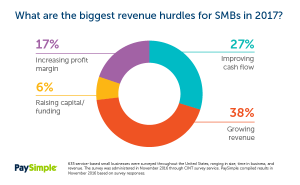
Background vector created by tartila – www.freepik.com
“I love getting feedback and hearing about all the ways I can improve or correct the way I work.” – said no one.
If there is something that makes almost everyone feel ookie, it is feedback. Because it is associated with negativity, the word alone conjures up fear and discomfort. Depending on the circumstance, feedback can send us straight into avoidance and shutdown or feel defensive and argue.
Yet, many organizations put a high value on feedback by way of annual reviews, the exercise of evaluating employee performance. While the efficacy of these programs is debated, giving feedback is a commonly expected leadership responsibility.
Outside of management, sometimes we need to give our peers feedback to address mistakes, clarify miscommunication, or improve outcomes. You don’t have to be in a leadership role to need to give feedback.
Yet, here’s the thing: You can’t give it without being willing to receive it.
People who deliver feedback well are the ones who routinely ask for feedback about their own performance and receive it in a respectful and professional manner. They model the behavior and response they want to see out of others. They make it “ok” to receive feedback which paves the way for them to give it.
Let’s look at why receiving feedback matters and provide some guidance on how to do it.
Why This Matters
Leaders and teams perform best when an open, learning mindset is fostered. This creates psychological safety or a sense of confidence that a leader or team will not punish, reject, or dismiss someone for speaking up. It is really about interpersonal risk taking.
- Can a colleague admit a mistake and neither I nor our boss will punish them for it?
- Can I speak up about a problem knowing my boss will listen and not think I’m complaining?
- Can our boss critique the team’s work and we won’t get defensive?
When this type of environment is created, people feel more secure discussing mistakes, addressing problems, sharing new ideas, and recognizing each other’s positive performance. Harmony is not the goal, rather openness and commitment to the work. This results in creativity, innovation, and higher levels of performance, both for the leader and the team.
The person most responsible for creating a psychologically safe environment is the supervisor or manager. Yet, the team bears some responsibility as well. When a leader or colleague demonstrates asking for feedback and receiving it in a non-threatening and supportive way, they model that it is safe and productive to engage in the discussions.
Finally, it cannot go unsaid that feedback is also about positive performance. A leader should not dismiss compliments or recognition of success, whether personal or team based. Asking for positive feedback is not an ego-stroke. Rather, it affirms the actions that produce results. Everyone benefits from knowing what they should continue doing.
Reframe It. Rename It.
Some organizations have a culture where the word feedback is neutral, or even positive. When someone says, “I received some feedback today”, the response is not “Oh no. What did you do?” Rather, it is considered information that will improve the person’s performance or the results of the work. Many view feedback as a gift.
However, the opposite is true too. The word feedback is negative and implies something went wrong. Leaders who work in organizations like this benefit by reframing “feedback” by using a different word entirely.
I like Amantha Imber’s position of asking for advice instead. She writes that feedback is backward-looking and “…tends to be less actionable.” While advice is future focused and “…people are more likely to think critically and specifically about strategies the person could do to improve.”
If the word “advice” is more palatable, use it. Other words might be debrief, recommendations, suggestions, etc. Really, any synonym for advice or feedback.
That said, the word itself is less important than the process.
Give Advanced Notice and Be Specific
Feedback is much easier to give and receive when it is expected. This means, the person from who you are requesting feedback knows that you are going to ask this of them, and they are given time to prepare. This applies to a specific activity or for recurring discussions.
Specific Feedback
If you would like feedback on how you facilitate a meeting, deliver a presentation, or prepare a report, then give that person a heads-up that you would like them to observe you do this. It may sound like:
“I’m trying to improve the way I facilitate meetings. Can I get your help? I’d really appreciate your feedback. At the next project meeting, I’d like you to observe if I invite everyone’s opinion and if I address problems or issues by helping the group identify action steps to solve them. I’d love to hear what went well and also where I can get better.”
This way, the person is prepared and the feedback you receive is valuable. Moreover, you are now demonstrating what it looks like to ask for feedback.
Recurring Feedback
Making feedback sessions routine and expected takes the weight out of them. The cadence depends on the team and the work. Some will have debriefs weekly, other teams quarterly. It may take two or three rounds to get the team comfortable with it. Everyone (the team and the leader) will need to feel certain it is psychologically safe to do this.
I worked for a boss who conducted bi-monthly feedback sessions on his and our performance. We asked each other:
-
What is one thing I do well that benefits the team or our work together?
-
What is one thing I can do to be more effective?
-
What can I stop doing?
This was a valuable exercise because it felt like we were on level playing fields and equally dedicated to performance.
Also, because this was routine and expected, it diminished the discomfort. We both had the space to prepare for the meeting knowing we may receive feedback related to improving or doing something different. I was ready to hear something that would improve my effectiveness.
My boss made feedback ok. He listened and received any feedback I gave him in a grateful and supportive way which helped me do the same.
Receive It Graciously (even if you disagree)
Getting yourself ready to receive feedback is as important as being prepared to give it. Some people might say that it’s easier to give feedback than to receive it.
Giving feedback? You feel like an expert sharing knowledge and advice! Receiving feedback? You run the very real risk of feeling like a dummy.
But with preparation, receiving feedback can be more valuable than giving it. Here are some tips:
-
This is an exercise to help you get better and an opportunity to influence others with your own behavior. This means demonstrating how to receive feedback openly and professionally.
-
The person giving you feedback may be nervous. Make them feel comfortable.
-
Say thank-you. In fact, this is the only thing you say after someone gives you feedback. There is no need to overtly agree nor disagree. It may sound like, “Thank you. This is helpful and I appreciate you sharing this. Thank you.” Certainly, speak up if you need clarifications or examples but do not get defensive or argue.
But what if the feedback is hurtful, wrong, or you simply disagree with it?
Say thank you. The last thing you want to do is respond in a way that deters giving you feedback in the future. You do not have to agree. Responses in these situations might sound like:
“Thank you for your candor. You’ve given me something important to think about. May I have some time to process it?”
“Thank you for raising this. I wasn’t aware and I appreciate you bringing this to my attention.”
Then, seek other viewpoints. One person’s feedback is a single data point. Drawing conclusions or making decisions on a single data point is short-sighted. Go to three or four other people and ask for the same feedback. If you receive multiple, confirming opinions, then you have better insight and something to improve upon.
If this person’s opinion remains an outlier, keep it in mind because that is their experience. Their experience is valid. You might need to adapt your actions or work to be more effective with them.
Again, the point here is to not only receive feedback to advance your performance but also to model it. This paves the way to give it.
This article was originally published on the Growth Partners Consulting blog.
Business & Finance Articles on Business 2 Community
(89)
Report Post







